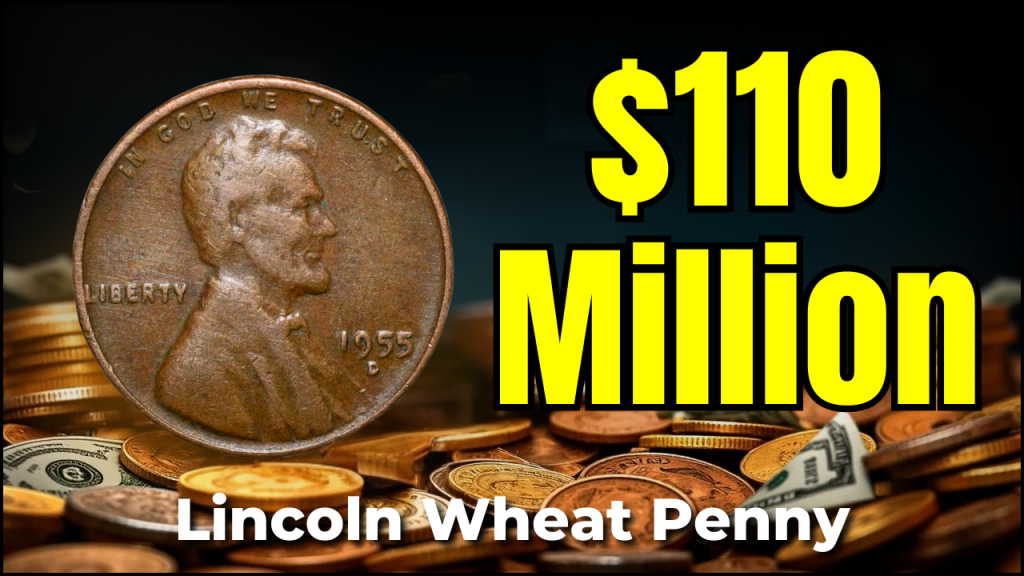
The world of coin collecting often unveils incredible stories, and the Lincoln Wheat Penny valued at $110 million is one of the most captivating. This rare coin combines history, chance, and demand in a way that few others can match. Let’s explore the details behind its unique status, its history, and why it holds such remarkable value.
Overview of the Rare Lincoln Wheat Penny
| Feature | Details |
|---|---|
| Coin Name | Lincoln Wheat Penny |
| Year Minted | 1943 |
| Composition | Copper (rare error coin, as most 1943 pennies were steel) |
| Current Value | Estimated at $110 million |
| Unique Identifier | Created accidentally using leftover copper planchets during wartime production |
| Historical Era | World War II |
Two Rare Bicentennial Quarters That Could Land You $85 Million
A $51 Million Lincoln Wheat Penny, The Rare Treasure Still Circulating
What is the Lincoln Wheat Penny?
The Lincoln Wheat Penny is an iconic U.S. coin first minted in 1909 to celebrate the 100th birthday of President Abraham Lincoln. Its design, created by Victor David Brenner, showcases Lincoln’s profile on the front (obverse) and two wheat stalks symbolizing prosperity on the back (reverse). Minted until 1958, these pennies became a staple of American currency during the first half of the 20th century.
Composition and Circulation
Most Lincoln Wheat Pennies were composed of 95% copper and 5% tin and zinc. However, during World War II, the U.S. Mint made a major change in 1943 by switching to zinc-coated steel for pennies to save copper for war efforts. This change is pivotal to the story of the $110 million penny.
The $110 Million Lincoln Wheat Penny: What Makes It So Special?
The coin’s astounding value stems from its rarity, historical significance, and collector demand. Let’s delve into the specifics:
1. A Wartime Error
In 1943, as part of wartime rationing, the U.S. Mint replaced copper with steel in penny production. However, a small batch of copper planchets from 1942 accidentally entered production lines. These planchets were struck, creating a rare anomaly now known as the 1943 copper penny.
2. Discovery and Authentication
The $110 million coin came to light when a keen-eyed collector found it among other pennies. Certified numismatists authenticated its origin and rarity. Its immaculate condition played a critical role in its valuation, setting it apart from similar coins.
Why is the 1943 Copper Penny So Valuable?
Four main factors determine the incredible value of this coin:
1. Rarity
Only a handful of 1943 copper pennies exist, as nearly all pennies minted that year were steel. Even fewer have survived in excellent condition, making this coin one of the rarest in numismatic history.
2. Historical Significance
This penny represents America’s adaptability during World War II. Its accidental creation offers a glimpse into the challenges of the era, capturing a moment of resourcefulness and urgency.
3. Condition
The $110 million penny is in pristine condition, with sharp details and minimal wear. In coin collecting, even the slightest blemish can impact value, making this particular coin exceptionally rare.
4. Collector Demand
Rare coins with a compelling backstory, like the 1943 copper penny, attract significant interest from collectors and investors worldwide. High demand for such coins drives prices to astronomical levels.
How to Identify a Rare 1943 Copper Penny?
If you suspect you’ve found a rare penny, follow these steps:
1. Check the Year
Examine the date. Any penny with “1943” and a copper color warrants closer inspection.
2. Weigh the Coin
A copper penny weighs 3.11 grams, whereas a steel penny weighs 2.7 grams. Use a precise scale to determine the material.
3. Seek Professional Authentication
Reach out to a certified numismatist to verify authenticity and assess value. Avoid cleaning the coin, as this can diminish its worth.
Can You Still Find Lincoln Wheat Pennies Today?
Although production ended in 1958, Lincoln Wheat Pennies still turn up in circulation and old collections. While finding a 1943 copper penny is extremely unlikely, other valuable dates or mint errors can occasionally be discovered.
| Common Dates to Look For | Why They’re Valuable |
|---|---|
| 1909-S VDB | First-year issue with limited mintage |
| 1922-D | Only year Denver Mint produced a penny without a visible mint mark |
| 1955 Doubled Die | Features a noticeable doubling of text and numbers |
Legacy of the Lincoln Wheat Penny
The story of the $110 million penny underscores the unpredictable nature of numismatics. From its unintentional creation to its legendary status, this coin exemplifies how history and rarity can elevate an ordinary object into a cultural treasure.
Even if you don’t stumble upon a million-dollar find, the joy of collecting and the thrill of discovery make numismatics a rewarding pursuit for enthusiasts of all ages.
Frequently Asked Questions
1. Why were most 1943 pennies made of steel?
Ans: During World War II, copper was needed for military purposes, prompting the U.S. Mint to switch to steel-coated pennies to conserve resources.
2. How many 1943 copper pennies are known to exist?
Ans: Experts estimate that fewer than 20 genuine 1943 copper pennies exist, making them extraordinarily rare.
3. What should I do if I think I have a rare coin?
Ans: Handle the coin carefully and consult a professional numismatist for authentication. Avoid cleaning or altering the coin in any way, as this can reduce its value.
Conclusion
The $110 million Lincoln Wheat Penny remains a symbol of historical intrigue and numismatic wonder. Its accidental creation, wartime backstory, and immense rarity combine to create one of the most coveted treasures in the collecting world. Whether you’re a veteran collector or a curious beginner, the allure of discovering history in your pocket change keeps the hobby alive and exciting.


